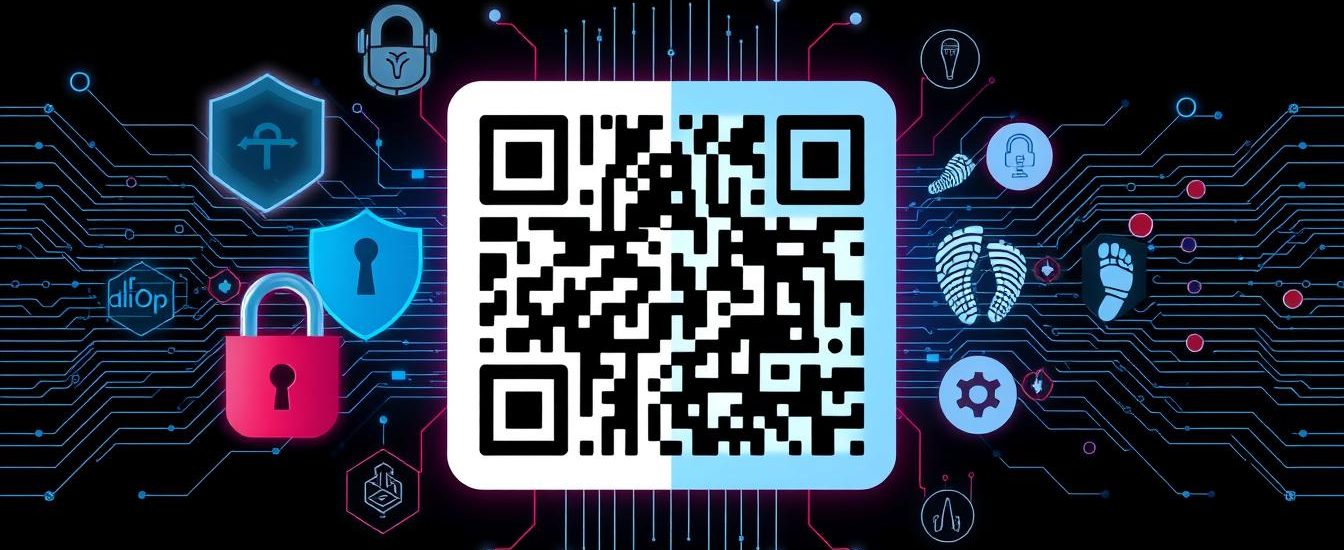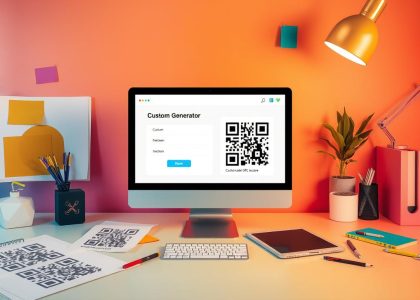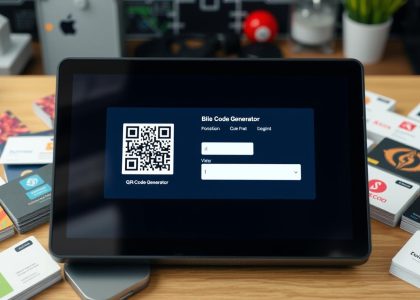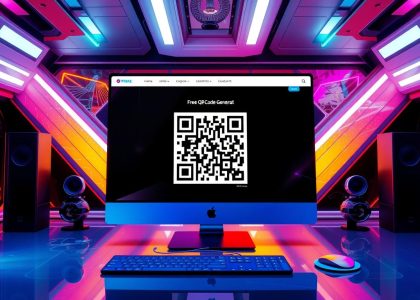QR codes are everywhere today, making it easy to get info, pay bills, and use services. But, as they become more common, worries about privacy and safety grow. This guide will look into how QR codes might track you, talk about privacy issues, and share tips to keep your info safe.
Key Takeaways
- QR codes can potentially be used to track your location and gather information about your activities.
- Understanding the technology behind QR codes and their data transmission methods is crucial to mitigating privacy risks.
- Static and dynamic QR codes have different data collection capabilities, with dynamic codes posing a greater risk to your privacy.
- Malicious QR codes can be used for phishing, malware distribution, and unauthorized location tracking.
- Adopting best practices, such as using trusted QR code scanner apps and enabling security settings, can help safeguard your privacy when scanning QR codes.
Understanding QR Code Technology and Its Basic Functions
In today’s world, qr code technology is everywhere, changing how we get information. These square barcodes are more than just pictures; they hold and share data. Knowing how qr code functions work is key to understanding their security risks.
How QR Codes Store and Transmit Information
QR codes can hold lots of data, like website links or payment info. They store this data in their patterns. Smartphones can then quickly read and use this info by scanning the code.
Different Types of QR Codes and Their Uses
QR codes come in many types, each for a specific use:
- Static QR Codes: These have fixed info, like a website URL or contact details.
- Dynamic QR Codes: These can be updated, making them very flexible.
- Payment QR Codes: They make mobile payments easy, letting users pay quickly by scanning.
- Event QR Codes: They help with event registration, tickets, and access, making things smoother for attendees.
The Technical Architecture Behind QR Scanning
The heart of qr code technology is its encoding and decoding system. QR codes use a special barcode format that scanners or mobile cameras can read. The scanning process captures the code’s patterns, decodes the data, and shows it to the user.
Knowing how QR codes work is vital for spotting security risks and fixing them. As qr code functions grow, staying up-to-date and careful is important.
Can You Be Tracked by Scanning a QR Code?
Many people wonder if scanning a QR code can lead to tracking. QR codes are handy for accessing digital content, but there are privacy risks to consider.
QR codes can store and share a lot of information. This can include simple links or detailed data like your location. This is where qr code tracking and qr code privacy risks come into play.
Factors That Influence QR Code Tracking
- The type of QR code being scanned (static vs. dynamic)
- The scanning device and its associated permissions
- The content or destination linked to the QR code
- The policies and data collection practices of the QR code provider or website
Not all QR code scans lead to tracking or data collection. But, some situations can raise privacy concerns that users should know about.
| Tracking Scenario | Potential Privacy Risks |
|---|---|
| Scanning a dynamic QR code | The QR code provider may track your location, device info, and how you use the code. |
| Granting device permissions to a QR code scanner app | The app might collect data from your device, like your location, contacts, or other personal info. |
| Scanning a QR code that leads to a website with aggressive data collection | The website could track your online activities, browsing history, and personal data. |
While there are risks of qr code tracking and qr code privacy risks, not all QR code scans are a threat. By being careful and informed, you can reduce these risks and safely use QR code technology.
The Reality of QR Code Data Collection Methods
QR codes are everywhere in our lives, but many don’t know how much data they can collect. It’s important to understand how QR codes collect data to keep our privacy and security safe.
Static vs. Dynamic QR Code Tracking
QR codes come in two types: static and dynamic. Static QR codes have fixed links or info that can’t change. On the other hand, dynamic QR codes can be updated or changed, making them better for collecting data.
- Static QR codes only track basic info like scan counts and device details.
- Dynamic QR codes can track more, like where you are, what you’re doing online, and more. This helps businesses learn a lot.
Types of Information Collected Through QR Codes
When you scan a QR code, it can collect many types of data. This includes:
- Info about your device, like what operating system you use.
- Where you are, based on your IP address or GPS.
- When and for how long you scanned the QR code.
- How you interacted with it, like what you clicked on and how long you stayed.
- Personal info if the QR code links to a form or page that asks for it.
How Companies Use QR Code Analytics
Businesses use the data from QR codes to learn and improve their marketing. They do this in several ways:
| Use Case | Insights Gained |
|---|---|
| Campaign Tracking | See how well marketing campaigns work by looking at QR code use and results. |
| Customer Behavior Analysis | Find out what customers like and buy by looking at their QR code use. |
| Targeted Advertising | Send ads and offers that match what customers have scanned and who they are. |
Knowing how QR codes collect data helps users protect their privacy. It’s key to making smart choices about sharing personal info.
Common Security Risks Associated with QR Codes
QR codes are becoming more popular, but they also come with security risks. These risks can expose users to data theft and malware. It’s important to know about these dangers.
One big risk is fake QR codes made by hackers. These can lead to phishing sites or malware downloads. They can steal your personal info and harm your device. Also, flaws in QR code making and scanning can let hackers change the data being sent.
QR codes can also track your location. When you scan them, hackers can find out where you are. This is a big privacy issue, especially in public places.
| QR Code Security Risks | Description |
|---|---|
| Phishing Attacks | Fake QR codes that redirect users to malicious websites to steal personal data |
| Malware Distribution | QR codes that trigger the download of malicious software onto user devices |
| Location Tracking | QR code scanning can reveal a user’s location, potentially compromising their privacy |
To avoid these risks, users need to be careful with QR codes. We’ll look at safe scanning practices in the next sections.
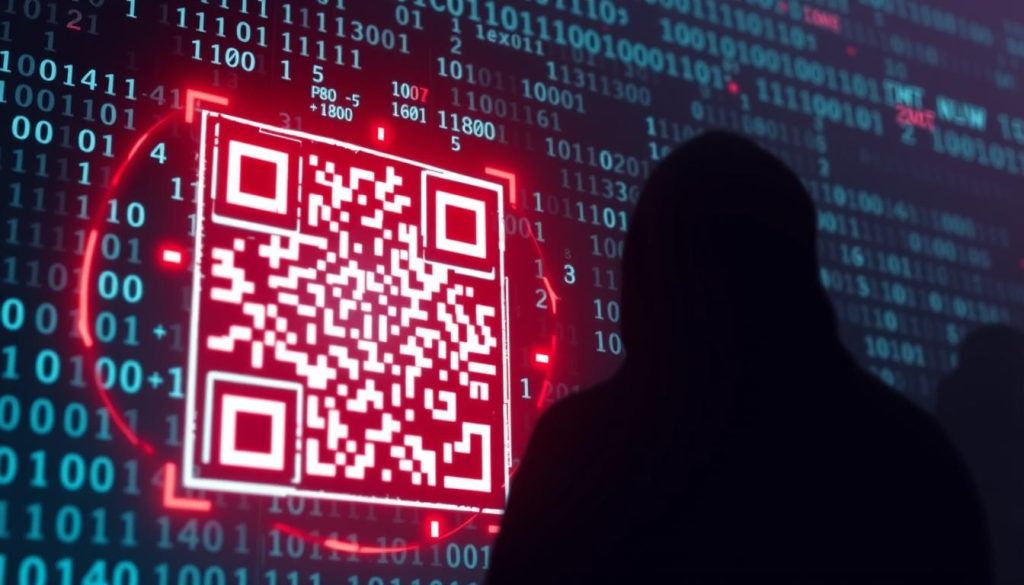
How Malicious QR Codes Can Compromise Your Privacy
QR codes are everywhere in our lives, but they also pose a big privacy risk. Cybercriminals use them to harm us, putting our personal info at risk. Let’s look at the dangers of malicious QR codes and how they can hurt your privacy.
Phishing Attempts Through QR Codes
Phishing scams often use QR codes to trick people. These codes can lead to fake websites that look real. They might ask for your personal details or login info, which can be used for identity theft.
Malware Distribution Tactics
QR codes can also spread malware. Criminals create codes that download harmful software when scanned. This can let them access your device, steal data, or control your system.
Location Tracking Vulnerabilities
QR codes can also track your location. When you scan one, your device might share your location. This lets the code’s owner see where you are and what you’re doing without your say-so.
It’s crucial to be careful with QR codes and protect your privacy. Knowing these risks helps you make safer choices and keep your personal info safe.
Best Practices for Safe QR Code Scanning
In today’s digital world, QR codes are everywhere. They make it easy to access info, websites, and services. But, it’s important to be careful and follow safe scanning practices. Here are some tips to help you use QR codes safely.
Inspect the QR Code Before Scanning
- Look closely at the QR code to make sure it looks real and hasn’t been altered.
- Be cautious of QR codes that look odd or are in strange places.
- Don’t scan QR codes from places or people you don’t know, as they might be harmful.
Use Reputable QR Code Scanner Apps
It’s a good idea to use a trusted QR code scanner app. These apps have safety features to protect you from threats.
Check the Destination Before Proceeding
Before scanning, check the QR code’s destination URL or info. If it looks suspicious, don’t scan it.
| Best Practices for Safe QR Code Scanning |
|---|
|
By following these tips, you can make QR code scanning safer. This way, you can enjoy the benefits of safe qr code scanning while keeping your privacy and security intact.
“Staying vigilant and adopting a cautious approach when scanning QR codes is the key to safeguarding your digital well-being.”
Tools and Methods to Protect Your Privacy When Scanning QR Codes
In today’s world, QR codes are everywhere. It’s key to keep your privacy safe when using them. There are many tools and methods to protect your personal info and avoid risks.
Recommended QR Code Scanner Apps
For better privacy, use apps made for scanning QR codes. They focus on keeping your data safe. Here are some good choices:
- Google Lens – It has security features and privacy settings to stop unwanted data collection.
- QR Code Reader by Kaspersky – It scans for threats and keeps your data safe from bad QR codes.
- Barcode Scanner by ShopSavvy – It scans QR codes and helps you find deals and read reviews safely.
Security Settings and Configurations
Using secure apps is just the start. You can also tweak your phone’s settings for more privacy:
- Turn on your camera or QR scanner’s privacy mode to share less data.
- Turn off location services for the app if you don’t need them.
- Clear the app’s cache and history often to keep your data safe.
- Use a VPN to encrypt your internet and hide your online actions.
With these tools and tips, you can safely use QR codes. You’ll protect your qr code privacy protection and avoid risks from secure qr code scanners.
“Protecting your privacy in the digital age is a continuous journey, and staying vigilant when scanning QR codes is a crucial step towards that goal.”
Legal Aspects of QR Code Tracking and Data Collection
QR code use is growing fast, and so is the need to know the law. Businesses using QR codes for customer data must deal with many privacy laws. This is a complex task.
In the U.S., the General Data Protection Regulation (GDPR) and the California Consumer Privacy Act (CCPA) are key. They say businesses must tell users how they collect data. They also need to get consent and let users control their info.
- The GDPR has strict rules for personal data, including QR code data.
- The CCPA lets California residents see their data and choose not to sell it.
Some industries have their own qr code data collection laws and qr code privacy regulations. For example, healthcare follows the Health Insurance Portability and Accountability Act (HIPAA). This law is very strict about data privacy and security.
“Businesses must ensure that their QR code data collection practices are fully aligned with applicable privacy laws and regulations to avoid potential legal consequences and maintain consumer trust.”
Companies using QR codes must be open and honest. They need to get clear consent and protect user data well. If they don’t, they could face big fines, legal trouble, and harm to their reputation.
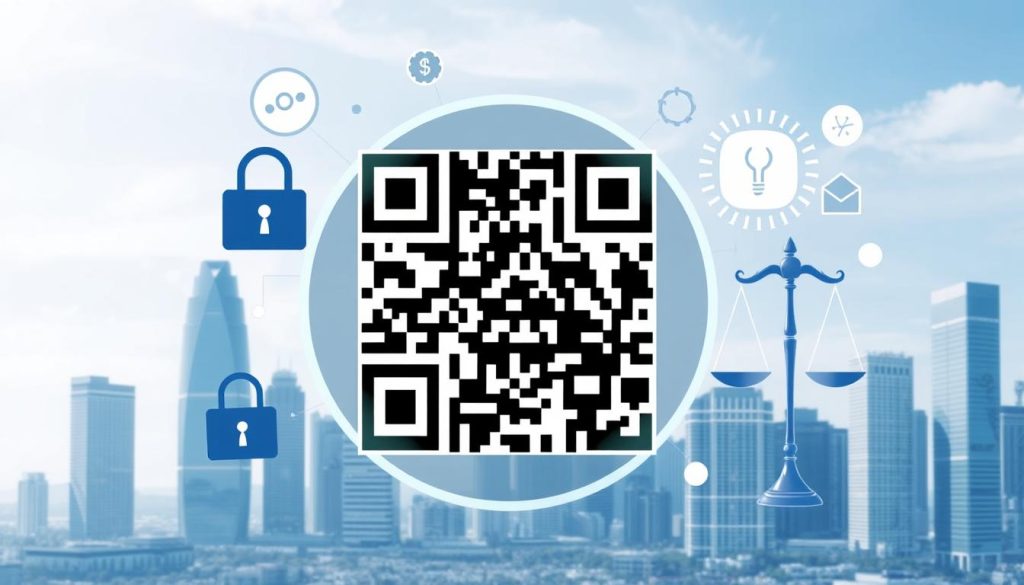
Real-World Examples of QR Code Security Breaches
QR codes are everywhere in our lives, but they also come with big security risks. Let’s look at some qr code security breaches and qr code hacking incidents. These examples show why we need to know the dangers of QR codes.
In 2021, a big attack on Telegram users was found. Hackers made fake QR codes that let them into people’s Telegram accounts. They could send messages, get data, and even buy things. This shows we must be careful when scanning QR codes, even if they seem safe.
In 2020, a big store in the US had a data breach because of their QR code loyalty program. Hackers found a weak spot in the QR code system. They got customer info like names, addresses, and what they bought. This shows we need strong security when using QR codes in business.
Also, QR code payment systems have been found to be vulnerable. Hackers could steal money or put malware on devices. A security expert showed how a fake QR code could steal cryptocurrency from people.
These examples remind us that qr code security breaches and qr code hacking incidents are real dangers. We all need to protect our data and privacy.
“The convenience of QR codes comes with a price – the potential for exploitation by cybercriminals. Staying vigilant and adopting best practices for safe QR code usage is essential in the digital age.”
As QR codes become more common, we must know the risks and how to avoid them. In the next parts, we’ll talk about how to stay safe with QR codes and protect your personal info.
The Future of QR Code Security and Privacy
QR codes are becoming more popular, and we need better security and privacy. Good news is that new tech and trends are coming to make QR codes safer and more private. This will bring a new era of secure and private QR code experiences.
Emerging Security Technologies
Blockchain technology is a big step forward in QR code security. It makes QR codes safe and secure by storing data in a way that can’t be changed. Also, using biometric authentication like fingerprints or facial recognition adds an extra security check. It makes sure only the right person can access the linked content.
Predicted Trends in QR Code Usage
- More people will use dynamic QR codes that can be updated and secured in real-time. This will help prevent malicious activities and data breaches.
- QR code authentication will be added to mobile wallets and payment apps. This will make financial transactions safer.
- QR codes will be used more in healthcare and government. These areas need strict data privacy and security.
- New QR code scanning apps will have advanced security features. These will include URL previewing and malware scanning to protect users.
The future of QR codes looks bright. With these new technologies and trends, QR codes will be more convenient, secure, and private. These advancements will help users trust and enjoy QR codes more than ever before.
Conclusion
QR codes are everywhere, making it easy to access digital content. But, they also pose serious security risks. Users need to be careful when scanning these codes.
We’ve talked about how QR codes can track and collect data without our permission. This includes location and personal details. We’ve also seen how malicious QR codes can lead to phishing and malware.
To stay safe, use trusted scanner apps and turn on security settings. Always check the source and content of QR codes. By being informed and cautious, we can enjoy QR codes safely. As QR codes become more common, we must stay alert to new privacy threats.


